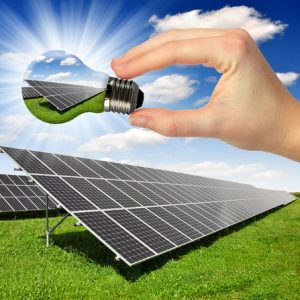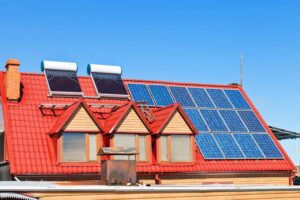
- Home
- Residential
- Commercial
- Tesla
- Testimonials
- About Us
- Contact Us
Category: Solar Power

The Future Of Solar Energy In The US – What To Expect?
Written by goldensolar on . Posted in Solar Panels, Solar Power. Leave a Comment

Solar Plus Storage Emerge as Next Generation Backup Power Source
Written by goldensolar on . Posted in Solar Panels, Solar Power. Leave a Comment

Role of Alternative Power Sources
Most people in the Caribbean region rely on generators as an emergency power source. The units are available at an affordable price, thus enabling wider use. However, the cost of running the generators is significantly higher. For this reason, many households run the generators for brief periods in the morning and evening only. Generators operate using various fuel sources, including liquid natural gas, gasoline or propane. This translates to an additional cost for households. The unavailability of fuel, particularly in lengthy outages can leave families in the dark. As a result, the utility of the equipment becomes limited to short-term power blackouts. On the other hand, entry-level units generate considerable noise and may require large storage space.Benefits of Solar-plus Storage Systems
The popularity of residential solar PV systems is growing in the Caribbean and North America. Households are leveraging low-cost benefits and the availability of new financing models to reduce exposure to the increasing cost of electricity. New technology enables users to combine the solar PV asset with an on-site energy storage system. The configuration allows the solar PV asset to act as a backup power system when the grid power is down. The battery storage system creates an island as the power generation transfers to the solar PV array. A protected loads panel regulates the PV power based on the household’s essential energy requirements. The panel’s load management role ensures optimal energy consumption, battery performance (state of charge) and solar PV power production. Optimization creates a backup power source that is efficient and reliable. Unlike fuel-powered generators, solar-plus provides constant power. A residential energy storage system produces zero emission, noise and does not need maintenance or fuel. These systems require minimal space in primary and secondary living settings. They can be installed indoors or outdoors. The form factor of newer, integrated lithium batteries is aesthetically pleasing than conventional lead-acid batteries. The cost of batteries has depreciated in recent years, thus making residential energy storage systems a more attractive and practical power source for households. The systems come with lengthy warranties of up to 10 years, longer working life (20 years or more) and a tight form factor. The systems have a low failure rate and operating costs and the installation process is non-intrusive. The post Solar Plus Storage Emerge as Next Generation Backup Power Source appeared first on Golden Solar.Solar Panel Production in China
Written by goldensolar on . Posted in Solar Panels, Solar Power. Leave a Comment
The world’s largest consumer of electricity, China also has recently become the world’s biggest producer of photovoltaic cells for solar power. Recent strides are not without challenges, though, and the country remains far from being fossil-fuel free.
2017 Production Surges
In the first half of 2017, China’s solar industry produced 25.9 percent more solar panels than it had during the first half of 2017, for a total of 34 gigawatts this year versus 27 gigawatts during the same period in 2016, according to the China Photovoltaic Industry Association (CPIA).
Official data published by the National Energy Administration (NEA) shows that 24.4 gigawatts of solar panels were installed during the first six months of the year. This represents an annual increase of 9% from the prior year. In June alone, 13.5 gigawatts were added, representing more than 55% of the entire total for the first half of 2017.
Experts predict that China’s production capacity will reach 60 gigawatts in 2017; last year, capacity reached 48 gigawatts. The continued decrease in production costs — the average cost to manufacture a solar module is less than $0.12 per watt –contributes to the increased production. China’s increased production also results from strong local demand as well as from continued foreign demand, particularly from the United States.
Installed Solar Capacity and Curtailment of Solar Utilization
As of the end of June 2017, China had 101.82 gigawatts of installed solar photovoltaic capacity. However, utilization rates are only at 85 percent on average. And though the national curtailment rate was 37 billion kilowatt-hours as of the end of the first half, representing a reduction of 4.5 percent from the same time the previous year, some regions of the country still show high curtailment solar rates. Underutilization especially is high in the northwestern provinces of Xinjiang and Gansu, whereas much as 30 percent of available solar power is failing to meet the grid.
China’s continued surge in solar energy panel production is threatened, though, by more than just problems with underutilization. An ongoing trade dispute with the United States and a petition to impose tariffs threaten to make the U.S. market hostile to Chinese solar energy products.
Stay tuned to Golden Solar for more industry news, tips, and trends.
The post Solar Panel Production in China appeared first on Golden Solar.Ways to Cut Your Home’s Carbon Footprint (Tips for Greener Living Series)
Written by goldensolar on . Posted in Green Living, Solar Power. Leave a Comment
The average American contributes an estimated 17 to 21.5 metric tons (around 40,000 pounds) of carbon dioxide in greenhouse gas emissions each year. This amount is known as the “carbon footprint.” Reducing your carbon footprint not only minimizes your personal contribution to climate change, doing so usually saves you money as well. You can estimate your own carbon footprint with the use of online calculators that account for location, type of housing and activities such as home heating and recycling. Minimize this footprint by taking some or all of the following steps around your home:
- Insulate your home. Seal air leaks and reduce drafts with caulk, insulation, and weather stripping around doors and windows.
- Appliances. Replace old appliances such as furnaces, washing machines, dryers, dishwashers, water heaters and refrigerators with energy efficient models. The ENERGY STAR label indicates products certified to have superior efficiency.
- Lighting. When you leave a room, turn off lights. Replace incandescent light bulbs with more efficient lighting, such as LED bulbs, which use up to 80 percent less energy and last longer.
- Thermostat. Install a programmable thermostat that will turn off heating or air conditioning when you are not home.
- Laundry. Wash clothes in cold water and line dry outside in warmer months.
- Hot water. Insulate your water heater for more efficient operation. Lower its temperature a few degrees also. Take shorter showers at lower temperatures.
- Recycle. You could save 582 pounds of carbon dioxide annually by recycling your household’s glass, aluminum, plastic, and paper, according to estimates by the U.S. Environmental Protection Agency. That’s the equivalent carbon dioxide that would be emitted by more than 600 miles of driving.
- Solar. Install solar panels on your roof. Photovoltaic panels capture the free, clean and renewable energy from the sun and convert that energy to electricity. Many providers offer financing options, several states provide incentives for installation, and if you live in a state with a Net Metering law, you could possibly eliminate your electricity bill and potentially earn money from selling excess electricity back to your local power company. If all of the electricity used by the average American home is generated through solar power instead of conventional fossil fuels, that home would emit 6.7 metric tons of carbon dioxide less each year.










